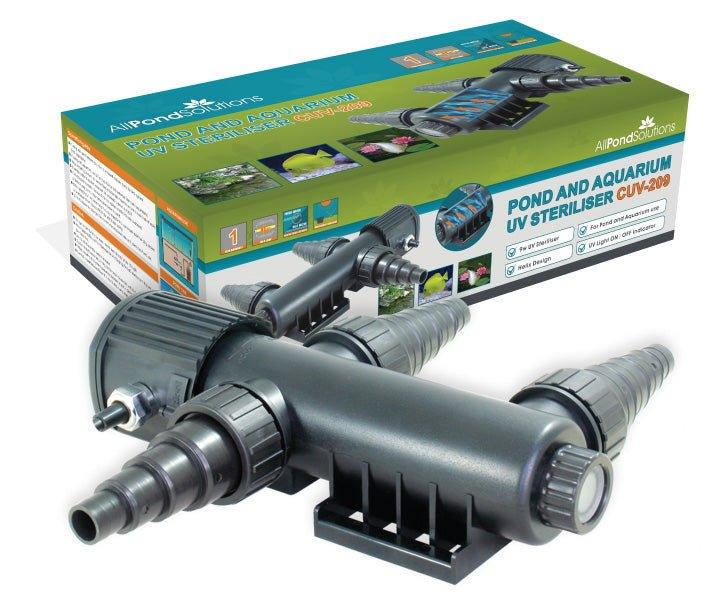When to Replace Aquarium Equipment
Replacing Aquarium Equipment
Fish tanks may appear simple, but in fact, they are complex structures with various pieces of equipment required to keep them working. Regular maintenance and care will ensure your aquarium equipment performs well for a long time, but at some point, you will likely need to replace something.
Our guide below will help you to determine when your aquarium equipment needs to be replaced. When looking for replacement parts, make sure you check out All Pond Solutions’ spare aquarium parts range.
Replacing Aquarium Filter Foams
The time frame for replacing filter foams can vary greatly, usually depending on the type of foam, the frequency of maintenance, and the level of waste. In general, fine foams should be replaced every 4 – 6 weeks. Medium and coarse foams can be replaced as soon as their pores start to become larger, which is a sign of falling apart.
When replacing filter foam, it is important to not replace the entire thing at once. Replacing filter foam also means removing useful bacteria that aid the waste conversion process. Replace a third or a half of your foam first, allowing the bacteria to populate the new foam, and replace the rest after a week or two.
Replace them: every 4 – 6 weeks for fine foams; once any signs of damage occur for medium and coarse foams.
Replacing Aquarium UV Bulbs
UV bulbs are the key component to UV sterilisers; without them, your steriliser won’t be able to reduce waterborne pathogens or algae. It is essential that you start checking your UV bulbs after about 6 – 8 months of use. After that point, the bulbs become less effective at sterilisation, which can lead to disease outbreaks among your fish. UV bulbs should definitely be replaced after 12 months, when they become ineffective at clarification and algae-prevention.
Replace them: every 6 – 12 months.
Replacing Aquarium Filter O-Rings
While O-rings may seem trivial, they are crucial parts of any canister filter system. Usually made from rubber, they prevent leaks in your filter and allow it to filter water correctly. O-rings should be checked when you do your regular filter maintenance. Check carefully for any tears, cracks, or breaks within the rubber that may compromise the seal. If you see any damage, replace them immediately or your tank may not be properly filtered.
O-rings are more likely to tear when they are dry and brittle, so extend their lifespan by using a food grade (i.e. non-toxic) lubricant to keep them supple. Also, remember that O-rings come in specific sizes that match each filter model, so ensure compatibility with your filter when purchasing replacements.
Replace them: once any signs of damage occur.
Replacing Aquarium Filter Impellers
Impellers keep your filter running smoothly by creating the suction that draws the tank water into the filter and through the filter media. With proper maintenance, impellers should last quite a while, despite being very fragile items. Proper maintenance includes cleaning the impeller of any debris, as well as cleaning the filter magnets and housing to reduce friction and pressure on the impeller.
Inspect the impeller for damage every time you clean it; if you notice any cracked or missing blades, replace it immediately.
Replace them: once any signs of damage occur.
Replacing Aquarium Filter Pumps
Filter pumps only need to be replaced when they are faulty. However, keeping a spare pump on hand is recommended. If your filter’s motor fails, you only have 2 – 3 hours before the essential bacteria inside start dying. Already having a replacement means you can maintain the bacterial population without having to go through the entire nitrogen cycle again.
Replace them: if they are faulty, but keep a spare on hand.
Replacing Aquarium Tanks
Fish tanks don’t need to be replaced unless they are faulty. With regular maintenance and repairs, a fish tank can be used for decades. Any problems that arise, such as a sealant leak or scratched or broken glass, are usually fixable – though they can be expensive or time-intensive.
Keeping a spare fish tank on hand is always a good idea. If your tank springs a major leak, you may need to temporarily relocate your fish while you fix it. Spare fish tanks can also be used as quarantine tanks for sick fish or as breeding tanks for small fry.
Replace them: if they are faulty, but keep a spare on hand.
